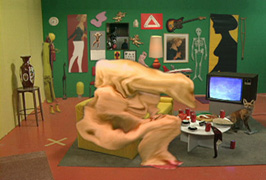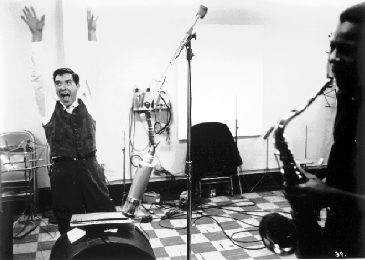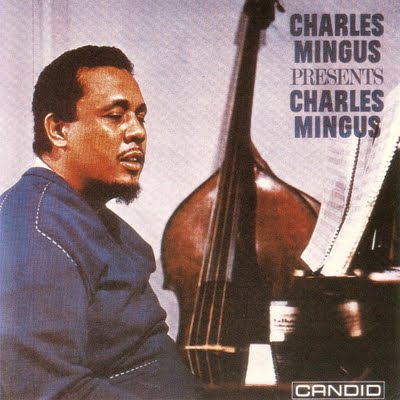Written for the FIPRESCI website in February 2004. For more on the original Shadows, go here.
To the best of my recollection, the first time I ever met Simon Field, the departing artistic director of the Rotterdam International Film Festival, was in the early 1970s — either 1970 or 1973 — when he was programming a festival of experiment filmmaking at the National Film Theatre in London (something he informs me he did both of those years). From the beginning of his eight years at the Rotterdam Festival, a major part of Simon’s special contribution has been not simply an emphasis on experimental film but also a kind of investment in that branch of cinema that perceives and highlights its interconnections with the other arts as well as with other kinds of cinema. There has always been something refreshing about his pluralistic and nonsectarian way of defining film experiment, and one can see this in the range exhibited by Afterimage, the invaluable magazine he coedited in England with Ian Christie for many years — an occasional publication which found room for Raoul Ruiz as well as Michael Snow, Noël Burch as well as Steve Dwoskin, and Jean-Luc Godard as well as Stan Brakhage.
Another way of describing Simon’s orientation would be to say that his mission has always been to expand both the canon and the audience of experimental cinema, and for me this has constituted one of his most spectacular achievements at Rotterdam. One could see it in the rising number of viewers attending the films of Ernie Gehr over the course of a single festival retrospective, and in Simon’s insistence on screening experimental films in mainstream venues like the Pathé and in prime time slots rather than following the safer and more conventional practice of segregating these films in a slightly out-of-the-way ghetto (e.g., the Lantaren and/or the Zaal de Unie), which is the more conventional way of handling experimental films at festivals.
Thanks to this welcome innovation, I can count as two of my most treasured experiences at Rotterdam two premiere screenings held in the roomy Pathé 7 two years apart: Michael Snow’s *Corpus Callosum in 2002, with Stan Brakhage (the subject of a retrospective that year) in attendance and part of the discussion that followed the film as well as Snow, and the first version of John Cassavetes’s Shadows, miraculously rediscovered after 40-odd years (and many years of searching) and presented by critic Ray Carney in 2004, which Simon justly described as the centerpiece of this year’s superb program, “Cinema Regained: Looking into the Part, to Create the Future”.
Although Simon could hardly have predicted this, one of the major revelations of the original version of Shadows is the experimental aspects of the film that can be found in Charles Mingus’s score — something that, to the best of my knowledge, has never been written about before. (There’s a score by Mingus in the second and better known version of Shadows as well, and it’s a very good one, but it’s also far more conventional.) Even Jonas Mekas, who championed the original version for what he suggested were its nonnarrative aspects — despite the fact that this “first draft” of the film can be said to have more narrative (as well as more nonnarrative) elements than the released version — had little or nothing to say about this music. But if one acknowledges that Mingus is as important to the history of music as Cassavetes is to the history of film, especially as an innovator, Simon’s ongoing emphasis on film in relation to the arts makes it easier to see Mingus’s innovative uses of music as commentary.
Consider how he gets a muted trumpet to both represent as well as mock the voice of one character (Tony Ray) speaking on the phone, reverting to a shouted gospel tune, “Leaning on the Everlasting Arms” (with the hollering voices of Mingus, Danny Richmond, and others) at another juncture, and in general using a highly fragmented approach that mixes brief, selected passages from a wide range of instruments, musicians, and arrangements — is probably the single most experimental aspect of the film from the vantage point of today. (By contrast, the nonnarrative stretches rightly celebrated by Mekas look almost classical now.) It’s also instructive to view this experimentation in relation to the musical “conversations” that Mingus was carrying on a little later between himself and Eric Dolphy — see, especially, Charles Mingus Presents Charles Mingus on Candid — in which the music was specifically phrased in order to approximate the sound of speech. Even if applications of this technique often work against some of the film’s narrative devices by duplicating or anticipating the work of actors and/or Cassavetes’ direction (which is no doubt why it was radically altered and also simplified in the release version), it survives as a fascinating glimpse of a road not traveled in subsequent film scores. And I’ll always be grateful to Simon for allowing me a chance to discover it.





